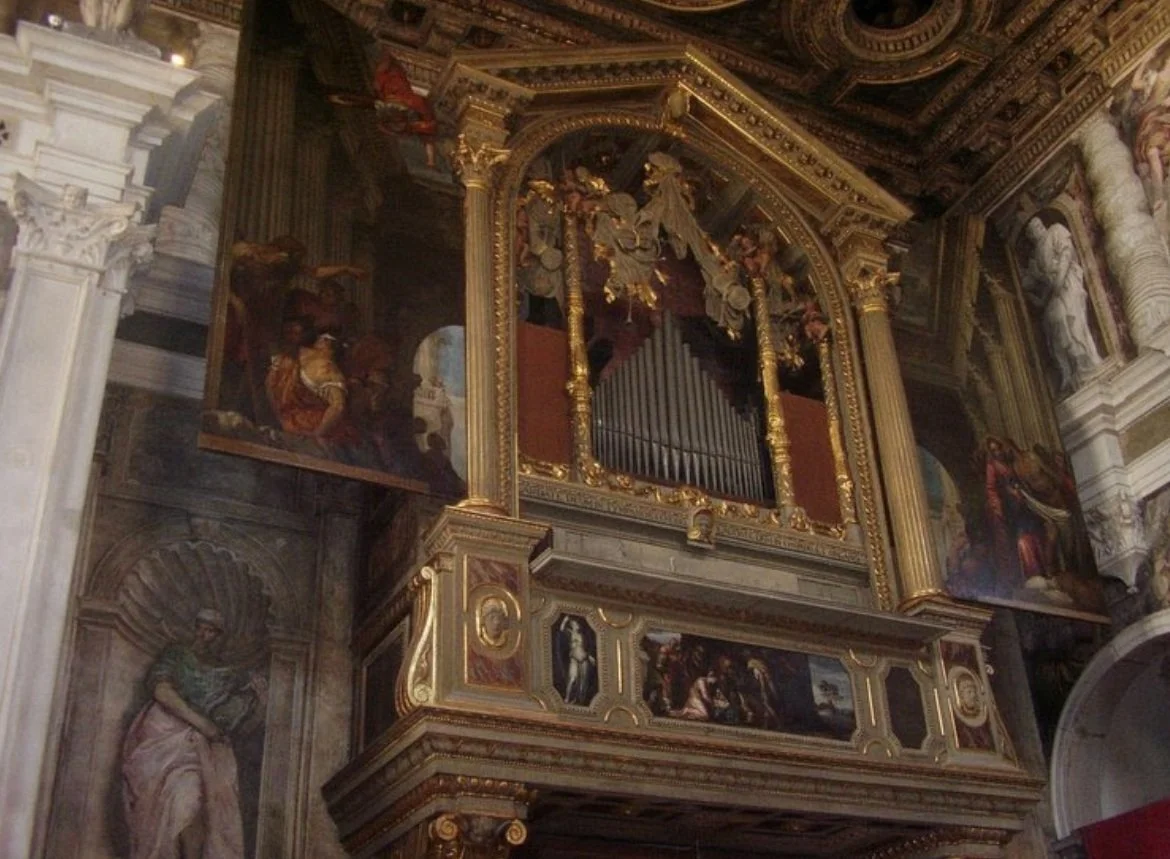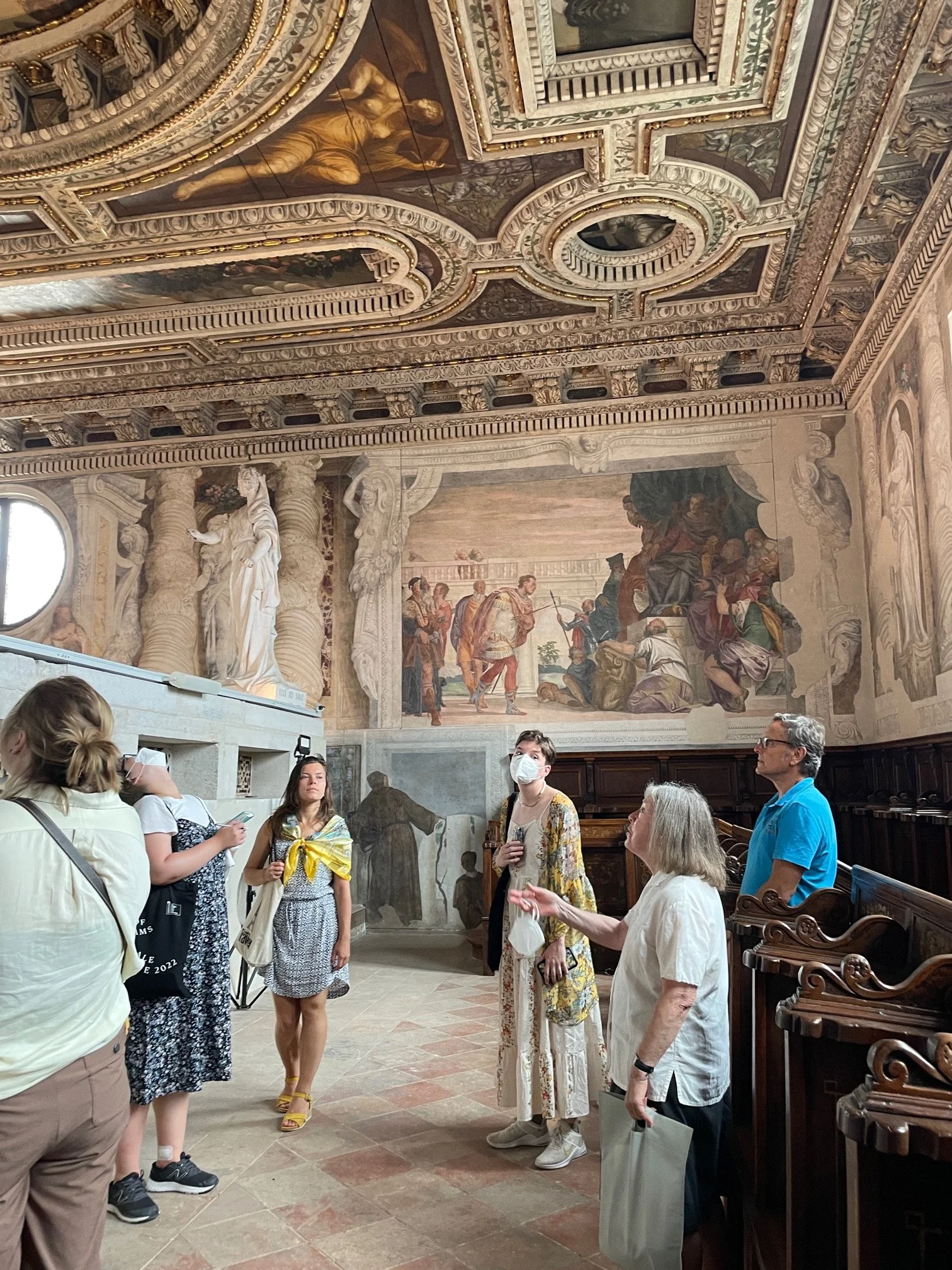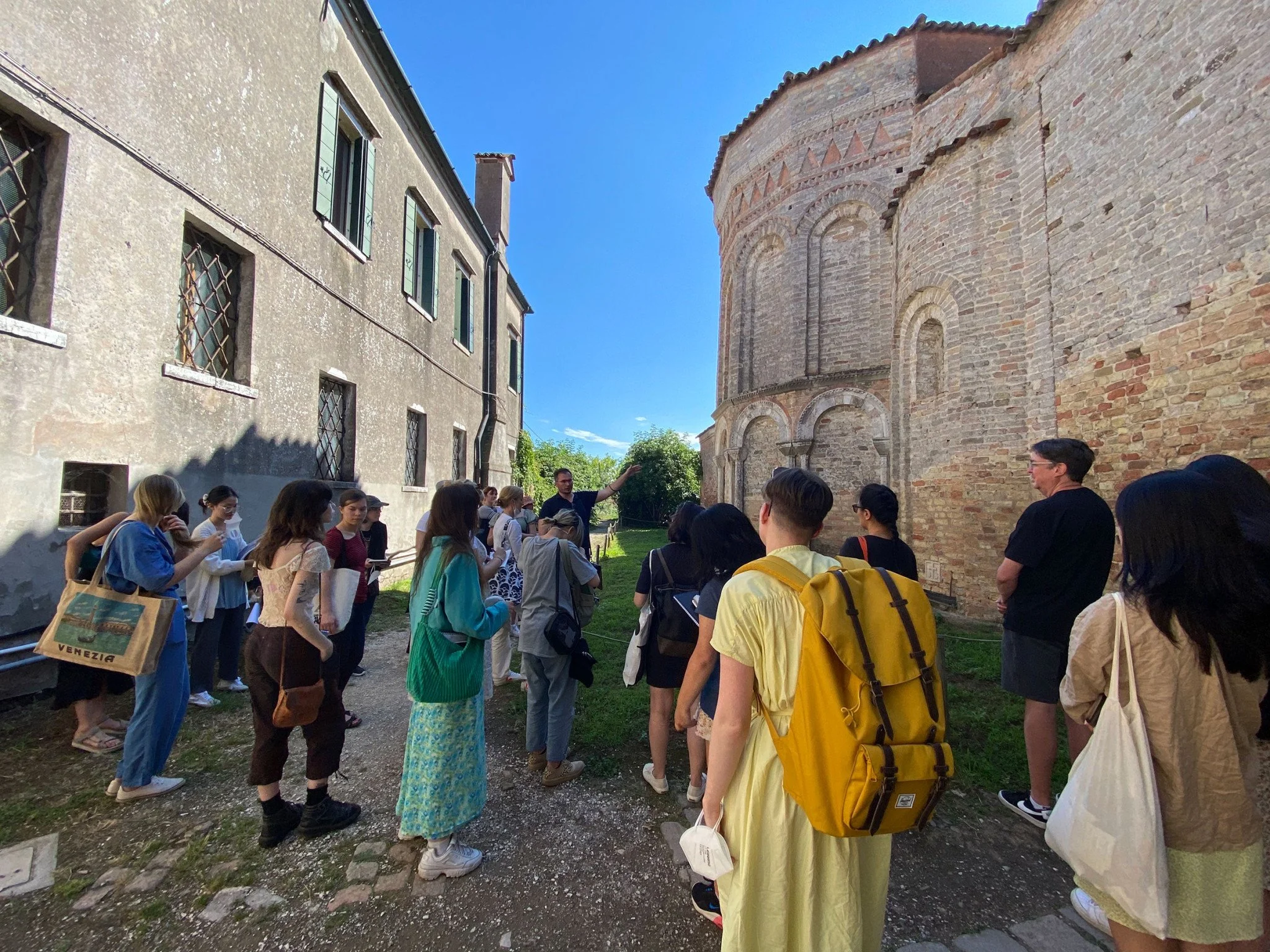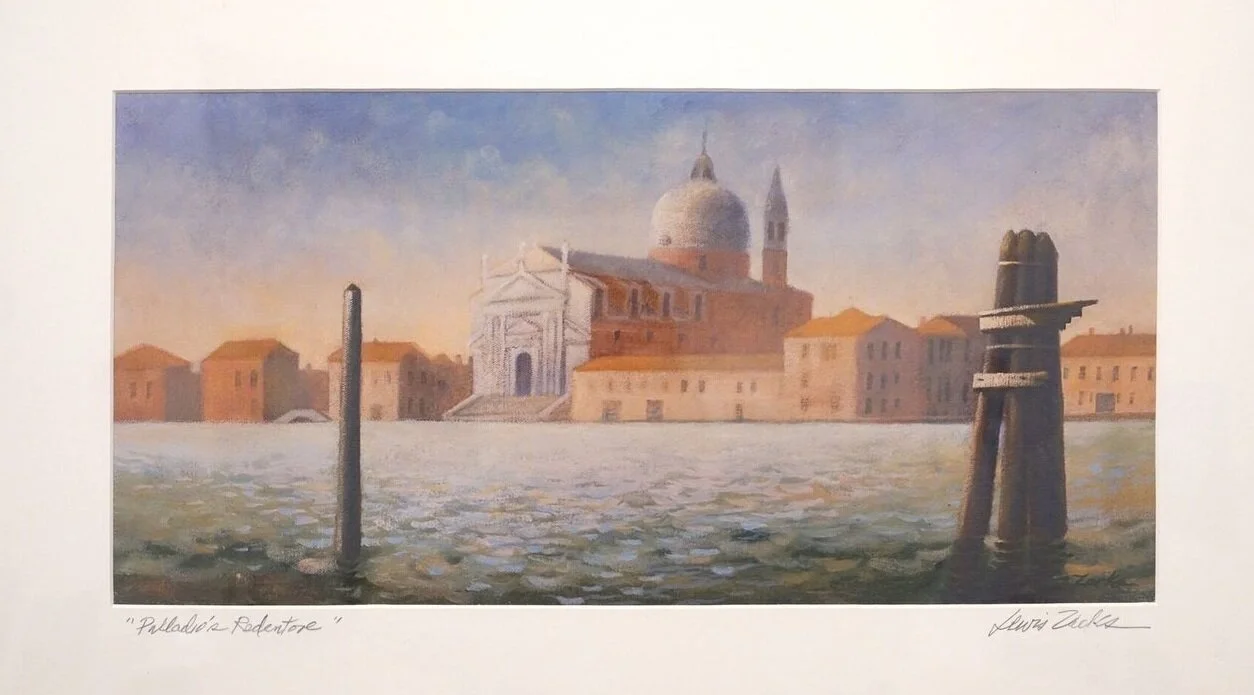Christina Manzella, Graduate Art History & Library Science Student
I knew from before I was accepted into Pratt that I wanted to participate in the Pratt in Venice program. First, it’s always better to experience art in situ. I’m a contemporary art person, which was a major factor in my choosing a school in NYC to study art history. Why wouldn’t I want to go to Europe to study Renaissance and Baroque art? Second, I’m a contemporary art person, so that Renaissance/Baroque distribution requirement was a bit daunting. I knew that fulfilling that class in Venice would be more fun. What I found out was that going to Pratt in Venice was also the best way for me to actually learn about that portion of art’s history. Taking the two art history courses offered meant a minimal amount of time in the classroom. The majority of our class meetings were field trips, and, when we were in the classroom, we had quite a few guest lecturers. This ‘hands-on’ approach was so engaging and ideal for learning about an area in which I thought I had little interest. Thanks to the program, I also learned that I’m really interested in architecture.
The benefits of participating in one of Pratt’s most established study abroad programs were evident in the art history classes. The benefits of going to a city with faculty who have been year after year became evident in our group outings and free time. Thanks to them, we found out which islands to visit, which areas to go shopping, and at which restaurants to eat. And, though I won’t divulge any of the surprises, there are some amazing group events. Finally, the Festa Redentore is not to be missed. It’s one of the best reasons to go to Venice during July. Do not miss this night!






